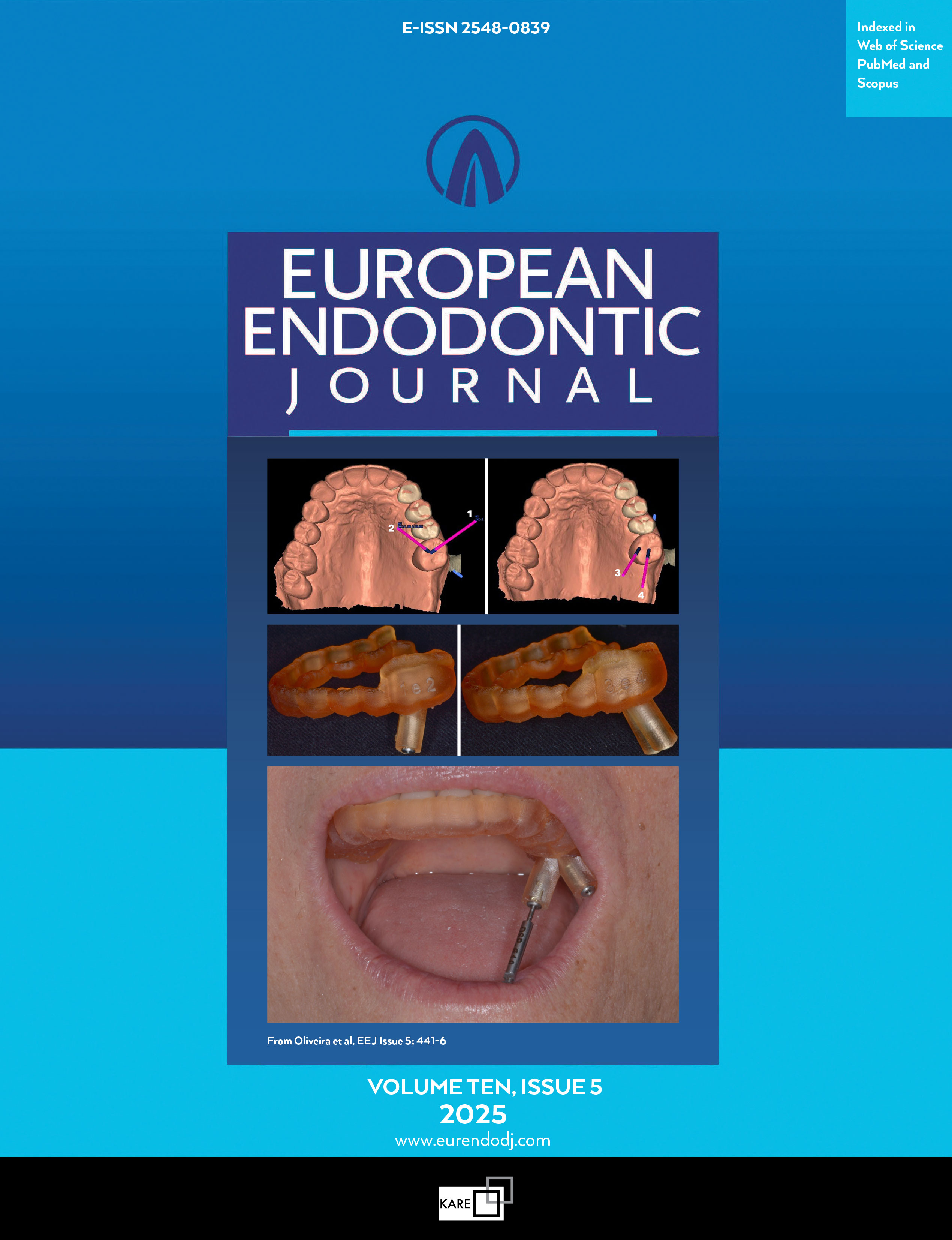Metrics
2.0
2024 IMPACT FACTOR
2024 IMPACT FACTOR
2.5
5 year Impact Factor
5 year Impact Factor
0.00069
Eigenfactor Score
Eigenfactor Score
3.2
2024 CiteScore
2024 CiteScore
72/162
Journal Citation Reports
(Clarivate 2025, JIF Rank)
Journal Citation Reports
(Clarivate 2025, JIF Rank)
Quartile Q2
Eur Endod J. 2020; 5(2): 54-67 | DOI: 10.14744/eej.2020.42714
2Department of Restorative Dentistry, Dental Branch, Shiraz Azad University, Shiraz, Iran
3Department of Endodontics, University of the Pacific, Arthur A. Dugoni School of Dentistry, San Francisco, USA; Department of Restorative Dentistry, Rutgers School of Dental Medicine, New Jersey, USA
Endodontic Periapical Lesion: An Overview on the Etiology, Diagnosis and Current Treatment Modalities
Kasra Karamifar1, Afsoon Tondari2, Mohammad Ali Saghiri31Department of Restorative Dentistry, Rutgers School of Dental Medicine, New Jersey, USA2Department of Restorative Dentistry, Dental Branch, Shiraz Azad University, Shiraz, Iran
3Department of Endodontics, University of the Pacific, Arthur A. Dugoni School of Dentistry, San Francisco, USA; Department of Restorative Dentistry, Rutgers School of Dental Medicine, New Jersey, USA
Nonsurgical and surgical endodontic treatments have a high success rate in the treatment and prevention of apical periodontitis when carried out according to standard and accepted clinical principles. Nevertheless, endodontic periapical lesions remain in some cases, and further treatment should be considered when apical periodontitis persists. Although several treatment modalities have been proposed for endodontically treated teeth with persistent apical periodontitis, there is a need for less invasive methods with more predictable outcomes. The advantages and shortcomings of existing approaches for the diagnosis and treatment of endodontic periradicular lesions are discussed in this review. (EEJ-2019-08-078)
Keywords: Cone-beam computed tomography, cyst, granuloma, periradicular lesion, root canal treatmentCorresponding Author: Kasra Karamifar
Manuscript Language: English
Manuscript Language: English
Full Text PDF
Download citation
RIS
EndNote
BibTex
Medlars
Procite
Reference Manager
Similar articles
PubMed
Google Scholar
(5 accesses)
(2892 downloaded)
(2892 downloaded)


